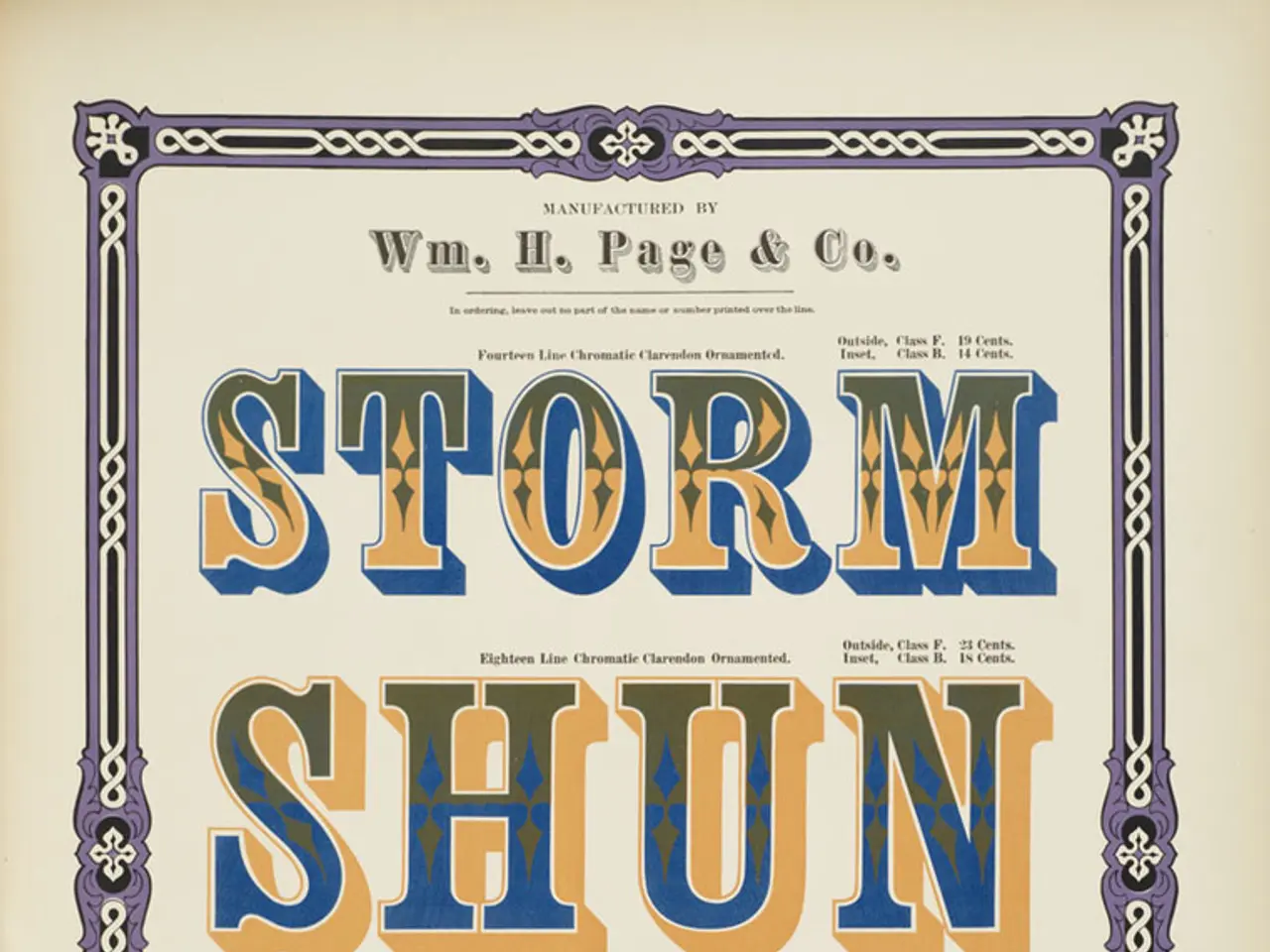Effect of Trump's Tariff Policies on Financial Market Sectors
President Donald Trump's new tariffs, implemented in early August 2025, have sent shockwaves through the financial markets. The anticipated tariff levels are likely to exceed earlier expectations, forcing investors to recalibrate their strategies.
The tariff deadline on August 1 has caused a significant sell-off in the market, with the S&P 500 experiencing a notable dip. However, the index remains close to its recent all-time highs and is up about 7% year-to-date[1]. Despite the initial market turmoil, analysts like Art Hogan and Michael Brown maintain a generally optimistic outlook for stocks for the remainder of the year.
The "TACO Trade" strategy, which assumed Trump would retreat from aggressive tariff measures, is now under scrutiny. This strategy, which has been popular among investors, is being re-evaluated in light of the President's firm stance. Analysts suggest that the market sell-off reflects the realization that the "TACO Trade" might be losing its relevance.
The adjustments to import duties, set to take effect on August 7, have left some room for potential negotiations with the US. The US Trade Representative highlights progress in the midst of tariff controversy, suggesting that there may be opportunities for dialogue.
European financial markets are experiencing turbulence due to concerns over President Trump's tariffs. The President's firm stance challenges previous market assumptions, causing uncertainty not only in the US but also abroad.
Despite these uncertainties, Hogan still targets a 6,500 level for the S&P 500 by year-end, suggesting a 4% rise from current levels. Uncertainties linger, particularly regarding the US-China trade deal, but the market's resilience and the possibility of further trade agreements leave room for optimism.
Analysts appear to be cautiously adjusting their strategies, recognizing the tariffs as a potential headwind but also noting the resilience of economic data and earnings so far. They remain watchful of typical late-summer market softness and the ongoing Federal Reserve stance of holding interest rates steady, which contributes to a more stable interest rate environment[1]. This suggests analysts are balancing optimism from strong earnings and economic fundamentals with the uncertainties introduced by tariffs and seasonal market trends.
Trump defends his trade strategy amidst criticism about the tariffs. The President maintains that his approach is necessary to protect American jobs and industries. The adjustments to import duties are part of a larger trade strategy aimed at rebalancing global trade in favour of the US.
In conclusion, while the new tariffs have caused initial market turbulence, analysts remain optimistic for the remainder of the year. The resilience of the market, the potential for further trade agreements, and the steady interest rate environment provide a foundation for optimism. However, uncertainties remain, particularly regarding the US-China trade deal, and investors will need to continue to monitor the situation closely.
[1] Source: CNBC, Bloomberg, Reuters (various articles dated August 2025)
- The tariffs implemented by President Donald Trump in August 2025 have influenced various aspects of global finance, pushing investors to reassess their strategies in light of the changing business environment.
- Politics and economics intertwine as the tariff controversy between the US and its trading partners creates ripples in the financial markets, particularly in Europe, forcing analysts to balance optimism from strong economic data with the uncertainties introduced by tariffs.
- Despite the initial market turbulence, the business world waits with cautious optimism, as analysts view the potential for further trade agreements and a stable interest rate environment as foundational elements for the rest of 2025, in line with the resilience demonstrated by the market.




